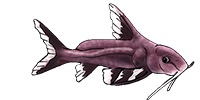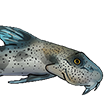I think a set of calculation/conversion tools, and perhaps a list of "Common tank-sizes in different countries" would be a good idea.
As to the "Search by region" in the Cat-eLog, this has been looked at before, and it's very hard to make it work well without causing other problems instead.
It's probably a better idea to figure out which Family and/or Genera the fish is [yes, I know, if you haven't got a clue, it's almost as hard to find the genus as it is to find which specie]. But if you haven't got a clue about what it is, how do you know what country/continent it comes from? Further, since about 75% of all species of catfish come from South America, it would only be really helpfull if you know the fish is from Europe [easy enough, only two native species], Africa, Australia, Asia or North america.
North american species, btw, are all in one family [Ictularidae], so they are pretty easy to discover by the Genus by Family.
Certainly, the most difficult area [where this would be most helpfull] would be south america, which is also the most rich of species [and families and genera], which means that it wouldn't be much elimination [yes, of course, eliminating some 25% or so would help, but not a WHOLE LOT].
Another idea is to search for instance
http://www.fishbase.org, where there is a search by Country, so if you know which country the fish is from, you can search for the species that come from this country, and then figure out which of these would be likely candidates from there, and then go onto the Cat-eLog for more details.
[Edit] Technically, if I understood Jools comments in a previous post correctly, this web-site is actually hosted on a (set of) machine(s) in California in the US. But the OWNER of the site is based in Scotland, which, along with the rest of the United Kingdom is using a legal standard of Metric, but most of the people living there are using a mixture of metric and imperial measures [which to complicate matters further, in case of volumes above ounces are different from the US measures - the US tried to sort of metricise the imperial volumes by making a pint the same number of ounces as a pound, thus making it somewhat more consistant].
--
Mats




